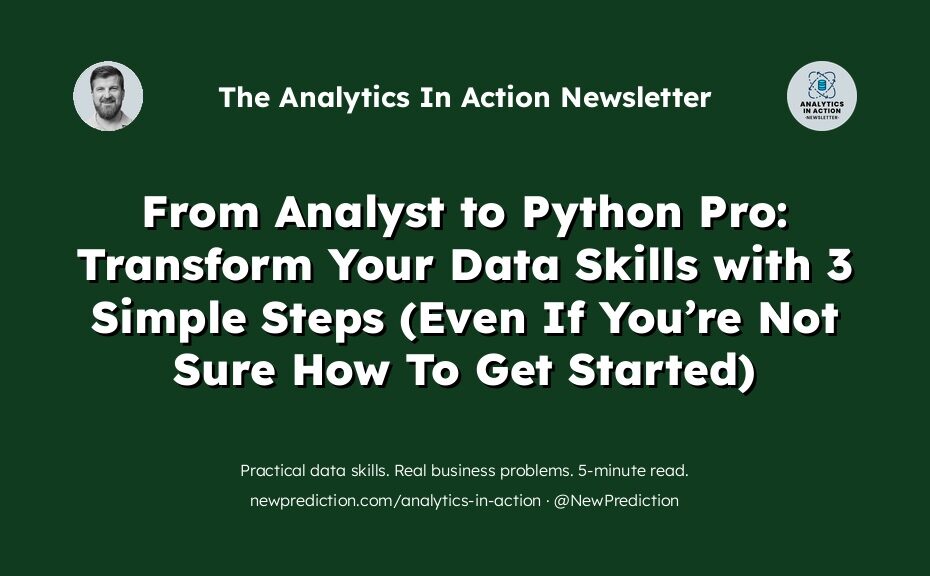I’ve been there—sitting on the sidelines watching others get good with Python.
Feeling stuck with just Excel and SQL. Not knowing how to branch out. Meanwhile, everyone else moves forward.
And you’re left behind:
- Stuck working on boring reports
- Trying to learn Python again (and again and again and again)
- Waiting for something magic to just click for you so you can finally move on.
It’s exhausting.
It was for me a few years into my business analytics career anyway. I had a co-worker, Scott, who was AWESOME at Python and could do seemingly anything. He ended up getting promoted and I ended up taking over his boring, pre-canned Excel reports for our boss.
But then, I asked myself: what if it were EASY to learn Python?
I mean, what would that look like?
- Being able to read and write Python code
- Working with data sets quickly and easily
- New skill sets and new opportunities
Well, here’s how to get there:
1. Start with the Basics
Begin by learning the essential elements of Python, like variables, data types, and simple operations.
Don’t worry about complex algorithms. Familiarize yourself with the simpler, foundational concepts. It’s like learning to walk before you run.
Here are some quick start steps if you aren’t sure where to start:
- Create a free Google Colab account and create a new notebook
- Write some basic code to get started
- Explore Python libraries for data analysis work
- Use sample datasets that are built into analytics libraries
- Practice different analytics tasks
- Get help online when you get stuck
2. Practice Regularly
Don’t just read—implement.
Apply what you learn through small projects or tasks. Consistency is key. It’s about practicing daily, even if it’s just for a short amount of time. The more you practice, the more the concepts will sink in, making it easier over time.
Examples of Python projects for data analysts:
- Sales analytics: very common use case that you can apply to tons of different industries
- Customer segmentation analysis: crucial for personalized marketing (super relevant skill!)
- Time series forecasting: widely applicable to all sorts of careers, from finance to healthcare and everything in between.
Each of these projects is valuable on its own. Especially when you practice regularly. You’ll work with different libraries. And work through different problems and use cases.
3. Seek Help
Connect with Python communities online, join forums, and don’t hesitate to ask questions, no matter how basic they seem.
Here are my go-to Python communities when I’m stuck:
- Stack Overflow: always useful when you’re stuck and need help thinking through a problem
- Reddit r/Python: useful for new resources, tutorials, and guides to help you get started
- Python Discord: a dedicated community of very helpful Python enthusiasts (there are 50,000 people online right now!)
Python is a handy tool for people who work with data and want to increase their earning potential.
This guide is here to show you simple ways to start using Python, even if you’re really busy. Here’s a quick look back at what you’ve learned:
- Easy steps to start using Python without any complicated setups, focusing on saving time.
- Using Google Colab online to try Python without installing anything.
- Example Python projects like looking at sales data, studying customer groups, and predicting future trends, to help you use Python in real jobs.
- A few helpful online places where you can talk about Python and get help.
Now, you know the basics and can start using Python to make smarter business choices. Keep trying more with Python; each new thing you try helps you learn more.
So, what are you going to try next with Python?
